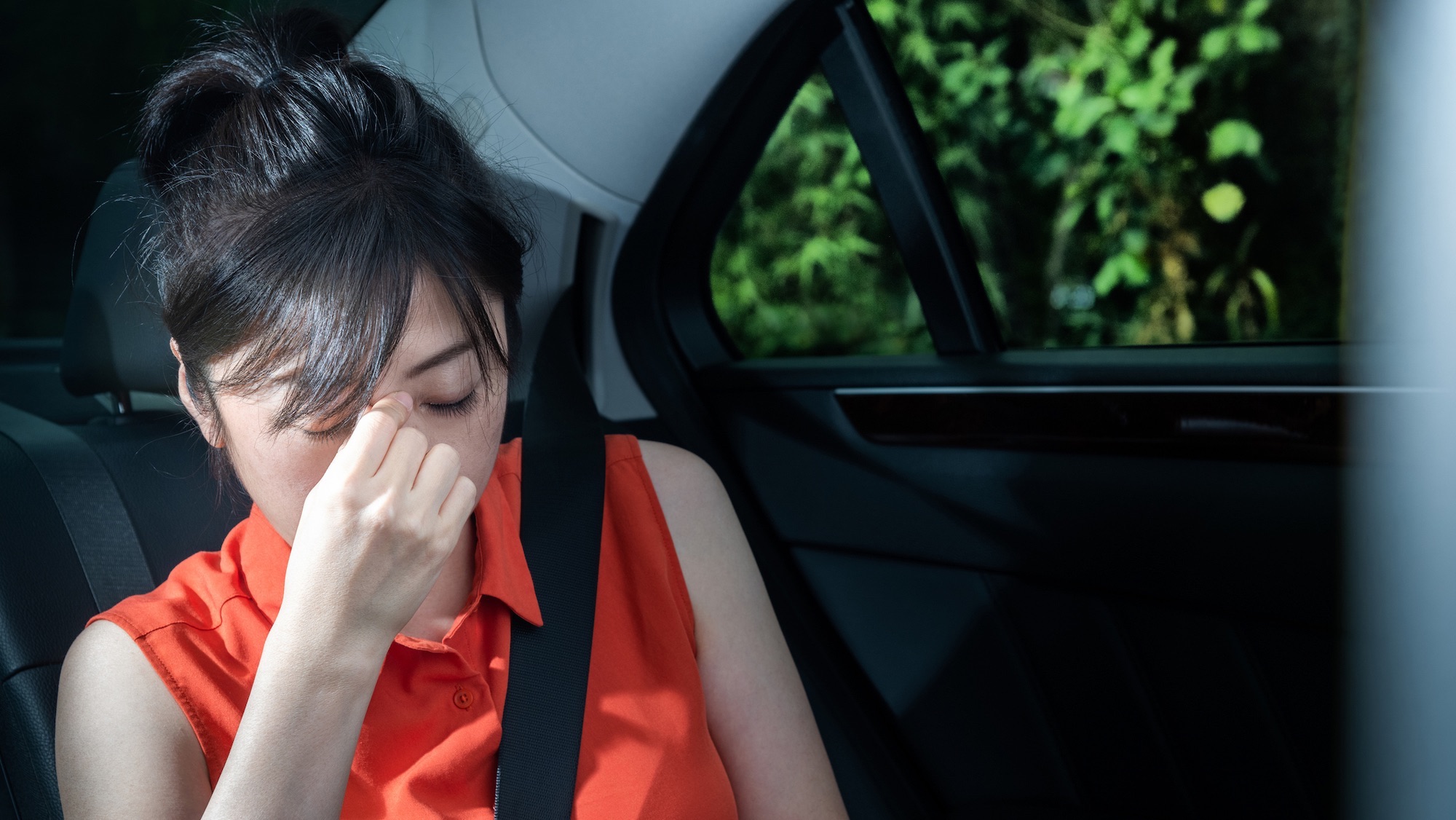
Get the Popular Science daily newsletter💡
Breakthroughs, discoveries, and DIY tips sent every weekday.
I can’t read in cars. Listening to music is fine, as are podcasts and audiobooks, but anything that requires looking down at a page or screen for longer than a few moments leaves me feeling nauseous.
I was intrigued, then, when I stumbled on an iPhone feature that’s supposed to prevent, or at least reduce, carsickness. The feature is called Vehicle Motion Cues and it overlays dots on the left and right side of your screen. Those dots move as the vehicle you’re riding does things like turn or speed up.
How is this supposed to work? To answer, we need to talk a bit about what causes car sickness in the first place.
How motion sickness happens
As we’ve reported before, there are two common theories for motion sickness: the “postural instability theory” and the “sensory conflict theory.” The first theory is that when humans lose control of their posture—on a rocky boat, say, or a roller coaster—we get sick. The second theory, “sensory conflict,” is more commonly cited in medical research, and it’s the theory that Apple’s Vehicle Motion Cues is built around. It’s also the explanation favored by the Center for Disease Control (CDC), which states that “motion sickness happens when the movement you see is different from what your inner ear senses.”
But what does your ear have to do with anything? Well, it turns out the ear does more than just hearing. The vestibular system, which is part of the inner ear, is basically why you can do things like run or ride a bike without falling, according to the Cleveland Clinic. A fluid called endolymph is (to simplify) sloshing around in your inner ear. The movement of the fluid is detected by hair cells in that system, and that detection is a big part of why you “feel” that you’re moving while sitting in a car even if you close your eyes.
Your vestibular system works closely with your visual system to maintain balance. This works great when you’re walking, running, or otherwise moving around under your own power. The problem is when you’re moving on a vehicle not under your control. Look away from the horizon, and your body can sense movement but not see it. The conflict between what you see and what you feel causes a sensory conflict, which can make you feel sick.
This is why the Cleveland Clinic recommends anyone who feels motion sickness while reading should put their “book, phone or tablet away and look at objects in the distance or the horizon” to resolve the





